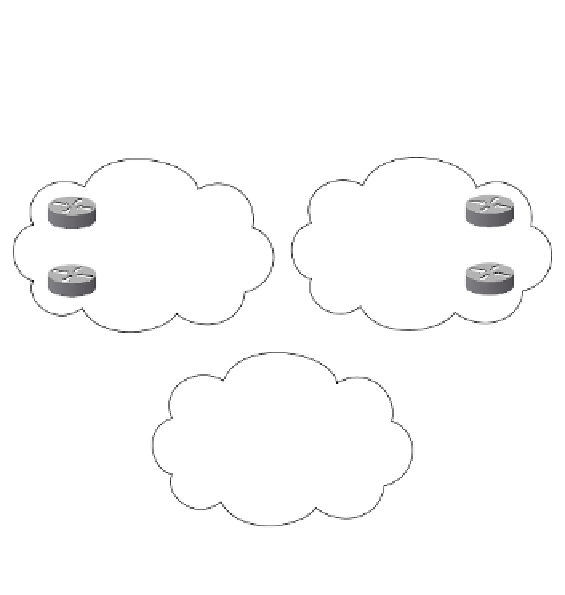Information Technology Reference
In-Depth Information
Figure 6-4
Multihomed Single Border Router Architecture
Internet
Provider B (AS 200)
Provider A (AS 100)
Enterprise (AS 300)
In this design, the enterprise border router is eBGP peered with both upstream providers.
The information received by the enterprise border router can vary from none to full tables
from both providers. The eBGP peering is required in this design scenario to allow the
enterprise's IP address space to be consistently originated. If BGP were not used, both
Provider A and Provider B would be seen as originating the same prefix, which does not
make sense. Advertising a prefix from multiple originating autonomous systems is called
inconsistent advertisement. Inconsistent prefix advertisement works just fine but is frowned
upon because of the ambiguity of the origination point.
The first option for configuring routing information is for the enterprise border router to
deny all prefixes and configure static default routes to the outbound interfaces. If a link goes
down, the enterprise's address space is no longer advertised to that provider. The default
route pointing at the failed link is removed from the routing table. This provides very
even load sharing of outbound traffic, assuming equal-sized links. The problem with this
scenario is that traffic destined for Provider A could be sent out the link to Provider B.



























